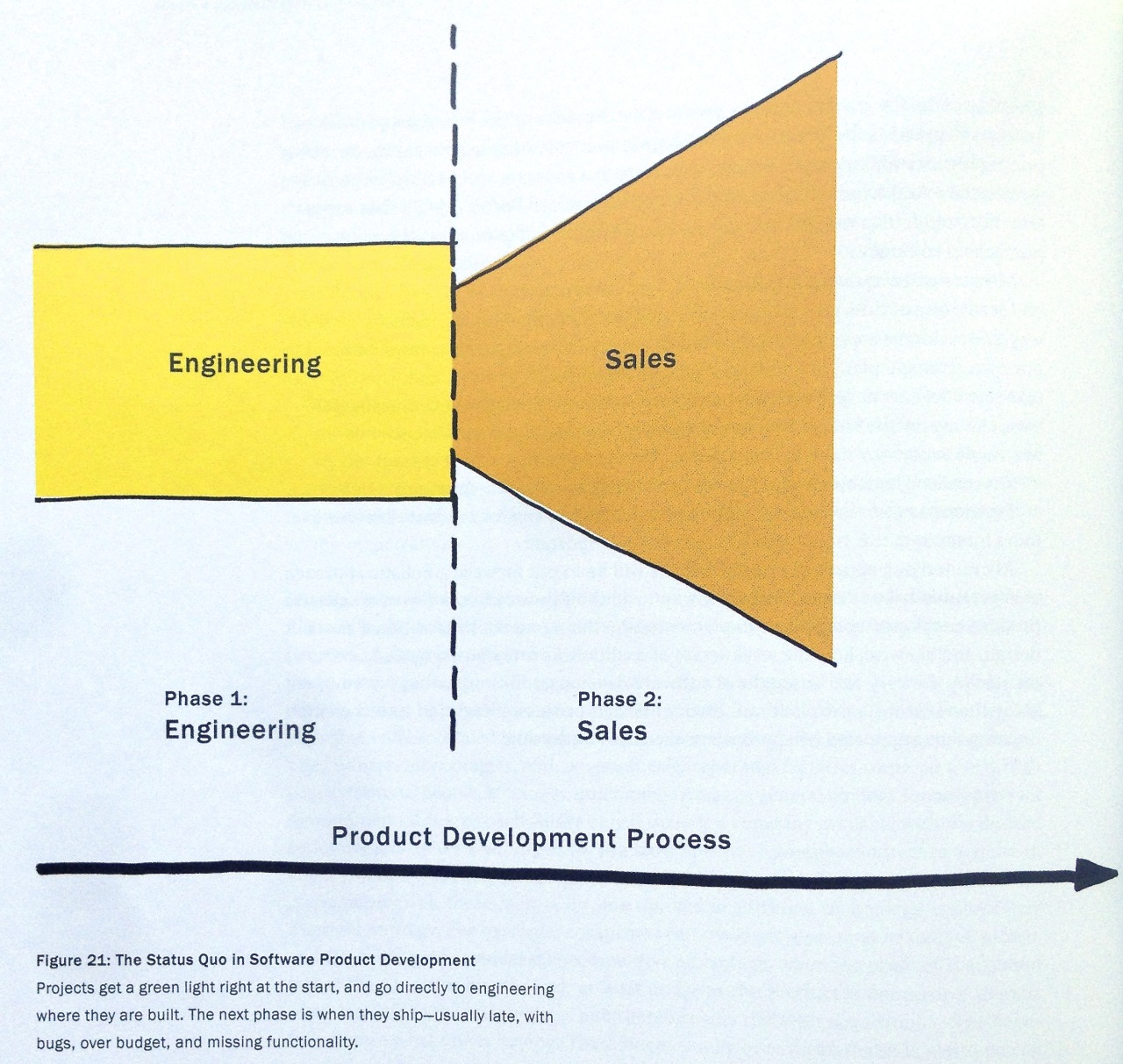A Theory of Craftsmanship
A working theory of what “craftsmanship” means. Relevant since making software is a craft more than a science.

A working theory of what “craftsmanship” means. Relevant since making software is a craft more than a science.

If you feel like the word “innovation” is being diluted to the point of meaninglessness, you’re not alone. Thankfully, Horace Dediu has done a nice job of explaining that innovations must be useful, not just new—or even valuable.
When you change the conversation and ask, “what’s useful?” you can talk about the scenarios in which your product gets used. At that point, you’re making real progress towards innovation.


Peter Coffee, Salesforce’s VP for Strategic Research, delivered a keynote at a recent Partner Forum that was essentially one, big call-to-action: create better, more innovative products because customers expect more.
Functionality is driven by customer delight.
User experience is a top priority.
75% of people have spent more for superior service.
Move from damage control to proactive customer care.
Your product can’t just be OK. It’s got to be great.
“It is the province of knowledge to speak, and it is the privilege of wisdom to listen.”

People do a poor job of predicting the future and prematurely frame it in terms of what they already know.
Moreover, most non-technical people don’t understand what’s possible, and even tech-savvy people have a hard time keeping up with what’s just becoming possible.

I’ve observed that once an organization institutes a design process before development, the design function effectively replaces what’s traditionally done by IT business analysts. This makes sense, as this article from UC Berkeley points out, since the pendulum swings from what the stakeholders say to what the users need.
The recent focus on data science, however, is an area of opportunity (or perhaps, refuge) for displaced BAs. (Note the purple area at the lower right.) Many designers have an art school background and are disinclined to attack data problems.
I’m generalizing in a way that’s insulting to both groups, but the larger trend is undeniable: as businesses incorporate more design to stay competitive, the days of those that transcribe stakeholder dictums into documents are numbered.



A silo-less way to build your products
Bill Buxton is a legend in the field of computing, and his book Sketching User Experiences is a classic for those building products. The title is actually a bit misleading: the book doesn’t specifically cover sketching, but instead provides a detailed walkthrough of the process of building great products.
These pictures from the book illustrate the product development process with increasing levels of maturity:
Engineering builds something, sales tries to sell it (no design)
Design is introduced prior to engineering
The walls separating those groups are broken down; management and marketing are integrated so the product has a consistent vision and story
If you’re struggling to get your company to focus more on design, try painting this larger picture and treat it as a stepping stone.


Amberlight Partners created an innovative, visually-oriented way to engage users in prioritizing future product ideas. First, they create a “card” for each idea featuring an illustration of the concept. This way, the user understands the gist of the idea without getting hung up on the potential UI.
Then, the user places the card in one of three categories:
Really important
Nice to have
I wouldn’t use this
Finally, the person running the activity asks the user what led to their decisions.
Tip: Don’t over-explain the possible features and bias the users. After all, it’s likely they will get little to no explanation in the real world.

If you want to get a user or customer to do something, you’re far better off making it easier to do and adding appropriate reminders instead of trying to increase their motivation.
For more on this, visit Prof. BJ Fogg’s web sites.

To add more realism to the bow and arrow scenes in the movie Brave, some Pixar employees took an archery class to familiarize themselves with the fine details. If you’ve seen the film, you know the pivotal scene this yielded.
Pixar President Ed Catmull shares this and many other details about what made their company great in his new book. If you want to build innovation and creativity into your culture, read this book immediately.


Data indicating problems needs to shout through visualization.
At Boeing, using data to gain deeper insights into problems is common. But there is a higher bar for what results in a “design-affecting decision.”

Once your data reaches certain size, you are effectively forced to visualize it.

Looking at data? Separate weekends, use Tuesdays.

Building a good visualization requires iteration as you work with the data.

Exploring data requires interaction.

Are you exploring or reporting? What’s your goal?





The leap of faith scene from Indiana Jones and the Last Crusade struck me as a good metaphor for doing customer interviews: just do it and you’ll be fine.
But after thinking more about it, I realize it’s deeper than that. There is no actual danger—only the illusion of danger created by the perspective you have on the situation. When you look at it differently, you see there’s nothing to be afraid of.
Best of all, when you figure out the “secret” and get through it, you make the path clear for others.
“Focus is scary—until you realize that it only means turning your back on markets you could never have anyway.”